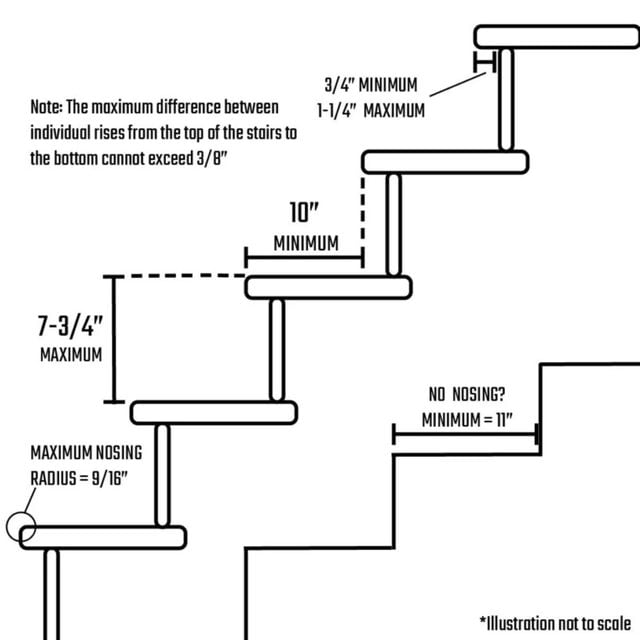A simple but helpful summary of what the IRC code says about building stair rise, run, and nosing.
Residential Stair Code Check: Rise, Run, and Nosing

The International Residential Code (IRC) has specific instructions on the way stairs can be built. Here’s a clear summary of what the IRC code says about stair codes for rise, run, and nosing.
(Note: not every municipality adopts every part of every code, and some cities and states add in their own additional rules. Bottom line, check with your local building official before cutting those stringers or forming that stoop.)
On This Page
IRC Stair Rise Requirements
The IRC code does not allow a distance greater than 7-¾ of an inch from one step/tread to the next.
IRC Stair Run Requirements
The “run” is the measurement of the tread, which needs to be a minimum of 10 inches if the tread has an overhang on it (see image). This is a measurement from the nose of the tread to the nose of the tread. You are not required to have a nosing/overhang on your stair treads. But if your stairs don’t have a nosing you are required to have a tread that is at least 11 inches long.
Variances
From the top flight of stairs to the bottom of the stairs, each individual riser cannot exceed a difference of 3/8 of an inch.
IRC Stair Nosing Requirements
The nosing on treads, believe it or not, has a code minimum and maximum of how far the nosing projects over the next stair. Nosings are required to overhang a minimum of ¾-in. to a maximum of 1-¼-in. Also the maximum nosing radius cannot exceed 9/16 of an inch.
Remember to Include Flooring
All of these measurements include the finished flooring, so don’t forget to take those thicknesses into account when planning your stair dimensions.
Here are three reference numbers for the codes pertaining to rise, run, and nosing in a straight run of stairs:
R 311.7.5.1
R 311.7.5.2
R 311.7.5.3



















